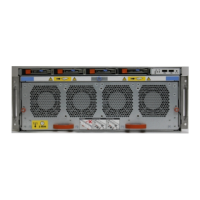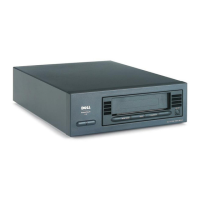13 DR4100 Best Practice Guide | April 2014
Since any data transferred during replication has already been compressed and deduplicated to roughly 85%-90%
of the original size, start by multiplying the original data size by 15% to determine the amount of data to be
replicated. For example, to transfer two terabytes of data, break it down into megabytes by multiplying the
value by 1048576. To convert 2TB to MB the formula would be: 2TB * 1048576 = 2097152 MB.
Now, reduce this number by 85% and assign it to the variable: replica_data:
replica_data = 2097152 MB * .15 = 314572 MB.
2. Determine the effective bandwidth. A common method to determine bandwidth between two sites utilizes a
freeware product called iPerf (https://code.google.com/p/iperf/). The following steps provide the command line
instructions to calculate bandwidth:
a. Run iperf –s –w 5M on a server at the central site.
b. Run iperf –c <IP of server at central site> -w 5M
c. Capture the resulting bandwidth reported from the server at the central site, showing the calculated
bandwidth between sites.
Assign the acquired bandwidth value to the variable effective_bandwidth. This value may be obtained from
other methods of your choosing, but should be specified in MB for further calculations. A bandwidth value of
10MB will be used for the following example.
3. Determine the acceptable amount of time allowed for replication. Convert the allowed replication time to
seconds.(i.e. 10 hours converted is 10*60*60 = 36000 seconds)
With this information, the following formula can be used to calculate the time required to replicate the data.
replication_interval = replica_data / effective_bandwidth
Using the example of 2TB and a 10MB effective bandwidth, time can be calculated as follows:
replication_interval = 314572 MB / 10 MB = 31457 seconds (8.7 hours)
5.4 Bandwidth Optimization
When utilizing replication it may be necessary to enforce bandwidth limitations. This can lower the impact of replication
traffic on the network. For example, if the WAN link also is required to support Video Conferencing, limits can be
applied to the DR traffic to allow that application the required bandwidth.
Keep in mind, when setting bandwidth throttling policies on a container replicating between two physical DR appliances,
the policy will be applied for all containers between the replicated devices. For example, containers 1 and 2 on a DR
appliance are set to replicate to a secondary DR appliance. When bandwidth throttling is set on container 1, the
bandwidth on the second container will also be throttled.
Replication schedules can be set to ensure one container gets more time replicating (for high priority data) or to schedule
replication to occur in off-peak hours, although in most situations it is recommended to leave the default settings and let
replication transfer data as needed over the network.

